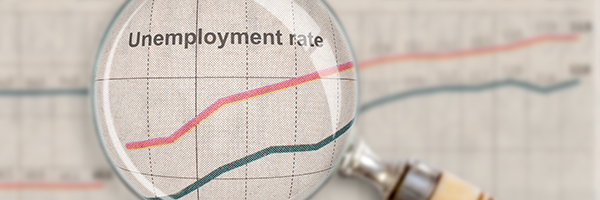
July 12, 2024 | Daily JAM, Morning Briefing |
The all-items Consumer Price Index (CPI) declined 0.1% In June from May on a seasonally adjusted basis, the Bureau of Labor Statistics reported this morning. The month-to-month CPI inflation rate was unchanged in May.
Over the last 12 months, the all items index increased 3.0% before seasonal adjustment. Economists surveyed by Bloomberg had projected a 3.1% rate. The all-items index rose at a 3.3% annual rate in May. The core index rose at a 3.3% annual rate in June. That was the smallest 12-month increase in that index since April 2021.

July 7, 2024 | Daily JAM |
I expect data showing a slowing economy to increasingly point to an interest rate cut by the Federal Reserve at its September 18 meeting. Right now, in the short-run, financial markets look likely to see a slowing economy as a positive and to rally on the increasingly likelihood of an interest rate cut at the September 18 meeting–and maybe even a second cut at the December 18 meeting. But I’m keeping an eye out for any shift in sentiment.

July 5, 2024 | Daily JAM, Morning Briefing, Short Term |
The U.S. economy added 206,000 jobs in June, the Bureau of Labor Statistics reported today, July 5. That was above the median forecast of 190,000 new jobs in a Bloomberg survey of economists. But even though the June number came in above expectations, the overall message in the data was that the labor market is slowing. The Bureau of Labor Statistics revised job growth in the prior two months down by 111,000. Average monthly job growth over the last three months slowed to the lowest rate since the start of 2021. And the unemployment rate rose to 4.1%

July 1, 2024 | Daily JAM, Morning Briefing, Short Term |
Wall Street strategists at influential investment giants are starting to recommend buying inflation hedges for 2025.
That means, at the moment, buying at the short-term end of the Treasury market–like 3-month to 12-month bills–and selling at the long-end–like 10-year notes.

June 23, 2024 | Daily JAM |
Expect a make or break inflation report on Friday. Make or break that is for the possibility of an initial interest rate cut at the Federal Reserve’s September 18 meeting.

June 7, 2024 | Daily JAM, Short Term |
After today’s surprisingly strong May jobs report, the odds for an initial interest rate cut from the Fed at its September 18 meeting weakened considerably

June 7, 2024 | Daily JAM, Morning Briefing, Short Term |
Employers added 272,000 jobs in May, the Bureau of Labor Statistics reported this morning. That number was well above the 185,000n projected by economists and even higher above the 175,000 in the April report. The financial markets were disappointed with the news since it pushed out the schedule for an initial interest rate cut from the Federal Reserve.A cut a the July 31 Fed meting has now been priced out by the market. The Standard & Poor’s 500 fell 0.14% today and the NASDAQ Composite dropped 0.23%

June 6, 2024 | Daily JAM, Morning Briefing |
The Federal Reserve has been telling us over and over again that it’d decision on cutting interest rates depends on the data. Among other things, the Fed wants to see a steady slowdown in the employment market reflected in the data before it cuts interest rates. But what if the data have been wrong? For months? Today in its regular Quarterly Cent of Employment and Wages the Bureau of Labor Statistics raised just that possibility.

June 4, 2024 | Daily JAM, Morning Briefing |
Be careful what you wish for. Financial markets have been hoping to see signs of a slowing U.S. economy that would let the Federal Reserve begin to cut interest rates. But after the Institute for Supply Management’s (ISM) manufacturing gauge fell 0.5 point to 48.7 in May, the weakest in three months, in data released on Monday, investors have begun to worry if this much of a slowdown is a good thing.

June 2, 2024 | Daily JAM, Long Term |
Don’t expect inflation worries to go away. One thing that is keeping inflation worries at full boil is the problem of understanding why inflation has stayed higher than expected for so long. Has something fundamentally changed in the economy? And could that keep inflation higher than expected for longer than now expected? The answer according to a new and disconcerting study from the Cleveland Federal Reserve Bank is “yes.” The inflationary impacts from pandemic-era supply chain shocks have largely resolved and the remaining forces that are keeping inflation elevated are “very persistent,” Cleveland Fed economist Randal Verbrugge wrote in a report released on Thursday. Inflation may not return to the U.S. central bank’s 2% target until mid-2027.

May 31, 2024 | Daily JAM, Morning Briefing |
The Federal Reserve’s preferred measure of U.S. inflation–the core personal consumption expenditures (PCE) price index, which strips out volatile food and energy prices–rose 0.2% in April from March.That was the smallest advance in 2024, according to Bureau of Economic Analysis data out Friday. And there was more evidence of a slowing economy today.

May 26, 2024 | Daily JAM, Short Term |
I expect Wall Street’s last rate cut bulls to get gradually less bullish. With means, expect to see interest rates (and Treasury yields) continue to rise, and the consensus on when the first cut in rates from the Federal Reserve to continue to move later in 2024. This past week economists at Goldman Sachs threw in the towel on their projections for a July interest rate cut by the Federal Reserve. The investment company moved its forecast for an initial cut to September.“Earlier this week, we noted that comments from Fed officials suggested that a July cut would likely require not just better inflation numbers but also meaningful signs of softness in the activity or labor market data,” the economists wrote in a note.Goldman Sachs had been one of the last banks on Wall Street betting the Fed would start lowering interest rates in July. JPMorgan Chase and Citigroup are among the few holdouts still forecasting a July move. Goldman is still predicting two interest rate cuts in 2024. The swaps market now fully prices in a December cut. The odds of a second reduction in 2024 stand at less than 30%, compared with about 70% last week. At the end of 2023, the first Fed cut was expected as early as March.










